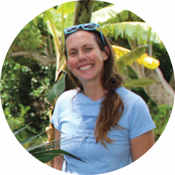SPONSOR:
United States Climate Alliance Natural and Working Lands Research
PROJECT PERIOD:
2020 – 2021
PROJECT PI:
Susan Crow, CO-PIs: Leah Bremer, Leah Laramee, Scott Glenn, Trae Menard, Christian Giardina, and Jayme Barton
COLLABORATORS:
Johanie Rivera Zayas (Post Doctoral Researcher), and Elaine Vizka (NREM PhD student)
ABSTRACT:
Hawai‘i was the first state in the nation to commit by law to 100% renewable energy and net negative decarbonization of the economy by 2045. Technology and information requirements for achieving these goals are significant; however, land-use change geospatial products, and associated decision support tools are currently inadequate for local to regional scale planning required to model Hawai‘i’s environment. A critical missing piece is a wall-to-wall land-use map that can be used to collaboratively identify and prioritize greenhouse gas (GHG) management opportunities across the diverse range of natural and working lands. To maximize landscape-scale sequestration rates, we will work with stakeholders and resource managers to develop a land-use classification map optimized for climate mitigation at the State of Hawai‘i scale. We are seeking options for climate-smart landscapes that collaboratively identify and prioritize (1) high quality lands for climate smart agriculture and ranching; (2) suitable lands for climate-smart reforestation, forestry, and agroforestry practices; (3) recently abandoned lands for rehabilitating soil health for agriculture; (4) managed forest; and (5) engages and honors the diverse conditions that shape land-use decision making in Hawai‘i. In support of Greenhouse Gas Sequestration Task Force (GHGSTF), outcomes will include a land classification map and a first-order Confidential and Not for Distribution USCA Grant Program for NWL Research 6 resource assessment to evaluate the implementation of drawdown practices including impacts of policy and programs directed to achieving current legislative mandates.
PRINCIPAL INVESTIGATOR
